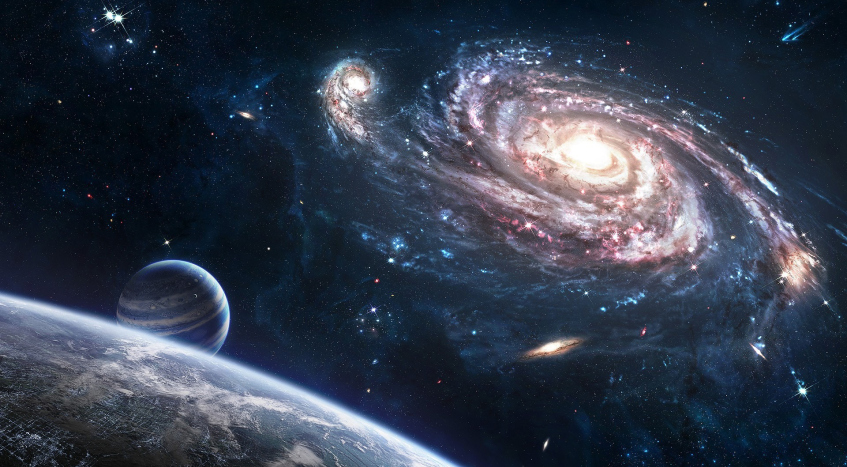When I was 12, my seventh grade class went on a field trip to the Denver Museum of Nature and Science. After dicking around like 12 year olds do for most of the day, we all quieted down when ushered into the planetarium to watch the new 20 min documentary, A Passport to the Universe, narrated by none other than Tom Hanks.
If you haven’t seen it, let me tell you. 12 years later and I still can’t shut up about it. A solid amount of the draw is Hanks as a soothing, unrelentingly professional voice guiding you through the farthest reaches of the universe, but what truly makes it so amazing are the fruitless efforts you undergo to wrap your mind around an infinite scale.
The documentary starts in a familiar setting, featuring the planet we hold dearest to our hearts. You know, Earth. Then we zoom out into the solar system, past other planets, into the Milky Way, out of the Milky Way, out of the cluster of galaxies the Milky Way resides in, out of the cluster of clusters that cluster is clustered in, and by the point at which we reach the edges of the known universe, you realize you haven’t taken a breath in nearly fifteen minutes. Then we instantly zoom back to where we started.
Cosmos, narrated by and starring Neil deGrasse Tyson, famous astrophysicist and noted Gravity-hater, fully understands the thrill of this type of journey. In its most recent episode, A Sky Full of Ghosts, viewers are treated to the concept of stars as “ghosts” given their extreme distance from Earth and the fact that although light travels faster than anything in the universe, it can still take a long time to reach us from the far reaches of the cosmos. In fact, the greater the distance in space that we see with telescopes, the further back in time we’re traveling. I know. It’s real.
Tyson is a fitting host for this show as an undoubtedly brilliant man who can leave the math to the side and explain impossibly complicated objects to lesser humans like us. Granted, from time to time he simplifies things so much that you feel as though you’re being treated like a 5 year old, but compared to him, we all are. He might be a bit of a dick, but he’s allowed to be—the Nate Silver of scientists.
The best parts of the show are absolutely when Tyson takes you on one of his computer-generated journeys throughout the universe, Passport to the Universe-style. Unless you have no imagination whatsoever, it’s hard not to get swept up in these scenes, with Tyson explaining increasingly complex truths and paradoxes about light, gravity, space, time, spacetime, and beyond as the camera sweeps through awesome areas of space we will never experience.
For me, the experience is almost like cheering on a favorite sports team. Tyson talking the extreme distance of the closest star besides our sun? “Yes,” I say firmly. Stars so massive they collapse on themselves, forming black holes? “WOOOOO!!!” I yell, pumping my fist in the air in circular motions. The possibility that our universe exists inside a supermassive black hole, and that everything that enters these “tears” in the spacetime continuum never escapes, not even light? “LET’S GO BABY!!!!” I’m screaming, kicking my legs in the air and throwing popcorn at the TV.
Watching well-done shows, documentaries, and specials about space (shout out Carl Sagan) have this effect on me, and they should on you too. Join in on the fun and let your imagination run free so you can ask yourself questions like this late at night in bed, staring at the ceiling:
Knowing that the universe is 13.8 billion years old, if you built a telescope that could see 13.8 billion light years away, would you see the beginning of the universe, aka the Big Bang?
Yeah. See you next week with Cosmos and my boy Neil.
